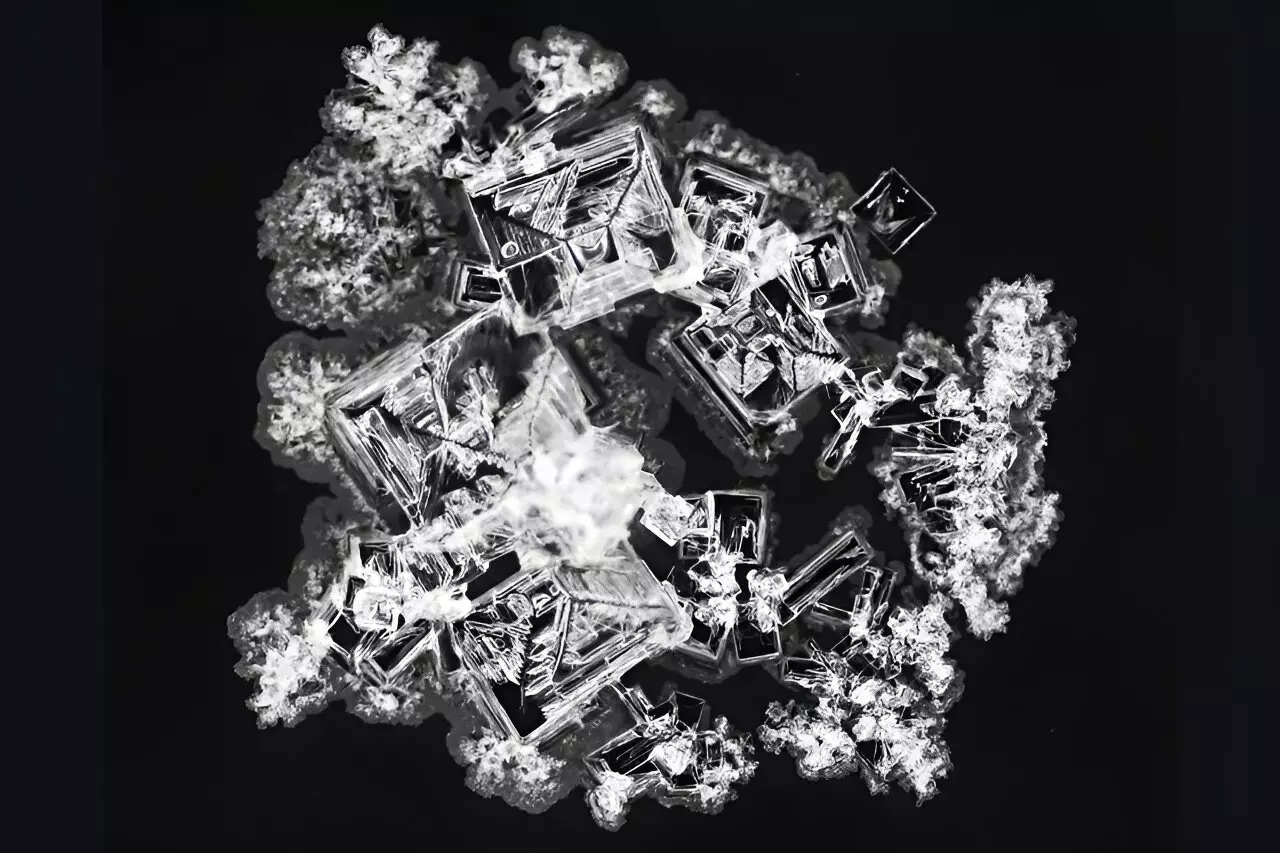Every droplet of salt solution that evaporates resembles an intricate piece of abstract art, a testament to nature’s own aesthetic. While most of us may dismiss these dried patterns as mere remnants of spilled food or salt, scientists at Florida State University have discovered that these seemingly random structures speak a profound language of chemistry. With the assistance of machine learning, they have turned these coruscating displays into a method for uncovering the chemical composition of various salts with remarkable accuracy. This research, published in the Proceedings of the National Academy of Sciences, not only challenges our perceptions of these everyday substances but also presents new possibilities for chemical analysis.
Decoding Nature’s Designs
The research team led by chemist Oliver Steinbock has a distinct and fascinating approach to understanding salt formations. Rather than examining the chemical properties of salts in a typical laboratory setting, they sought to interpret the physical patterns created when a salt solution dries. Numerous environmental factors influence these patterns, including fluid dynamics, crystallization processes, and temperature variations. By thinking outside the box and asking a novel question—can we identify the type of salt based solely on the patterns formed in its dried residue?—the team ventured into innovative territory.
They meticulously captured 7,500 images of 42 distinct salt types, employing sophisticated software to convert these visuals into quantifiable data. Each image was transformed into 16 unique parameters, analyzing elements such as area, texture, and compactness of the crystalline structures. This transformative approach epitomizes a growing trend in research, where visual data is quantified, allowing machine learning algorithms to glean insights that humans might overlook.
Machine Learning Meets Chemistry
Machine learning has the potential to revolutionize not only how we conduct research but also how we apply findings across various fields. The FSU research demonstrated its utility effectively by using algorithms that identified the chemical composition of salts with 90% accuracy based solely on the patterns of dried solutions. “Who would think that from a photo, you can tell the difference between sodium chloride and potassium chloride?” Steinbock mused, acknowledging the surprising effectiveness of their technology. This pivotal moment solidifies the bond between artificial intelligence and the natural sciences, igniting the imagination about the future of chemical analysis.
The implications of this technology are expansive. Not only can it aid laboratory work, but it holds potential for extraterrestrial exploration. A rover equipped only with a camera could analyze and identify salts on another planet, potentially saving precious resources and space. The ramifications extend to fields spanning from environmental monitoring to clinical diagnostics, opening vast frontiers for fast and efficient screening where traditional methods may prove cumbersome or impossible.
Environmentally Friendly Chemistry
In today’s scientific landscape, trends toward eco-sustainability and minimalism are paramount. The approach by Steinbock and his colleagues exhibits both. Their technique utilizes a minimal amount of material — merely a few milligrams of salt — which drastically reduces waste and enhances resource efficiency. Such a method allows for analysis without the burden of requiring comprehensive laboratory infrastructure in every location. Whether testing confined lab spaces or remote environments, this innovative analysis technique can streamline numerous processes while maintaining environmental sensitivity.
Not only does this facilitate rapid identification, but it also provides essential information about potentially hazardous materials with minimal risks. For instance, a quick evaluation of a spilled substance in a lab can inform safety protocols without extensive laboratory testing. This proactive measure can prove invaluable in ensuring lab safety and operational efficiency.
The Future of Salt Analysis
Looking forward, the promise of this technology lies in its scalability. The researchers plan to develop their training dataset further by analyzing hundreds of thousands of images, significantly enhancing the algorithm’s accuracy and versatility. They are also exploring the possibilities of a robotic imaging system that could automate the process, making it even easier and faster to analyze salts in varying environments.
In an age where science advances exponentially, the intersection of artistry and rigorous research is mirrored in the remarkable findings of this team. This project not only highlights the elegant complexity inherent in salt formations but also exemplifies the creative approaches needed to address pressing scientific questions. As the fusion of visual art and chemical science continues to evolve, our understanding and appreciation of the natural world will deepen profoundly, showcasing the beauty hidden in the most mundane elements of our daily lives.

